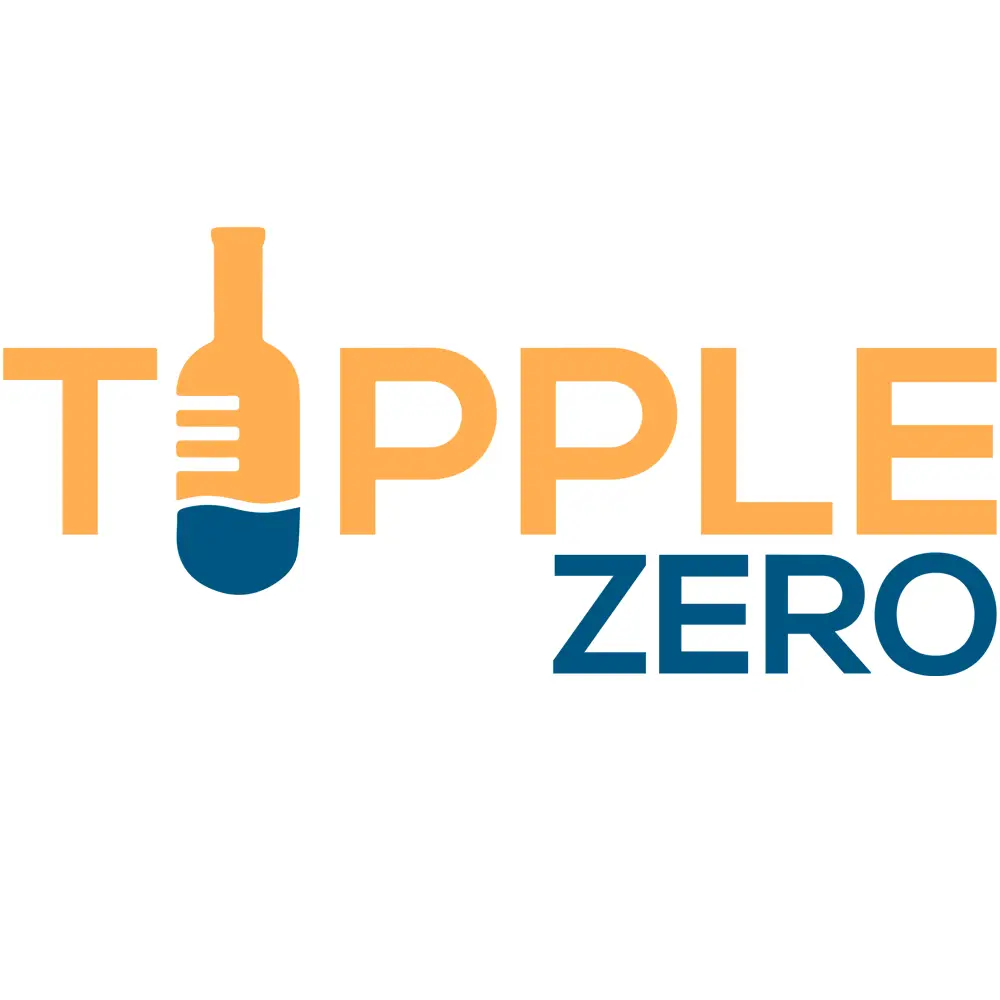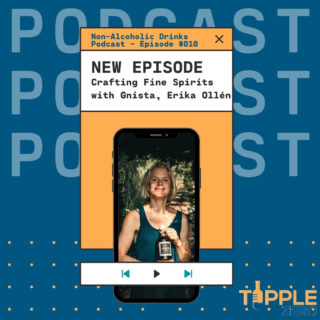Non-Alcoholic Drinks PodcastCreating Inspiring Dark Spirits with Gnista Spirits: Episode #010
GNISTA SPIRITS: SUMMARY & SHOWNOTES
What is Gnista Spirits: What we covered
Erika dropped in to chat all things Gnista, we covered:
- why Gnista exists and who it is there to act as a drink for anyone looking to enjoy a drink without alcohol whatever their reason may be;
- what is Gnista Barrelled Oak;
- what is Gnista Floral Wormwood;
- how are each of the Gnista spirits made and what goes into them from a process and ingredient perspective;
- the way that the team have expanded to global markets on a bootstrapped marketing budget all while managing to go viral with their party sober campaign; and
- lots of cocktails and how you can drink the product as well as where they will fit into your routine.
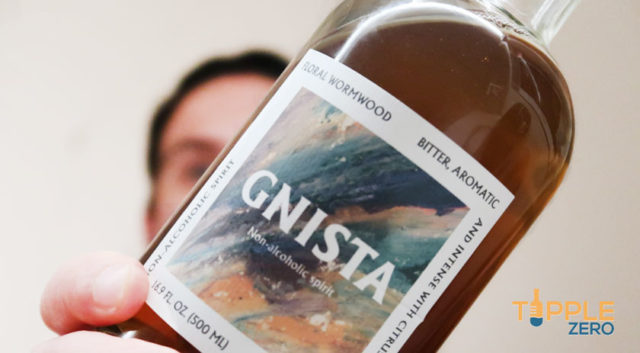
Gnista Spirits: Drinks and Links
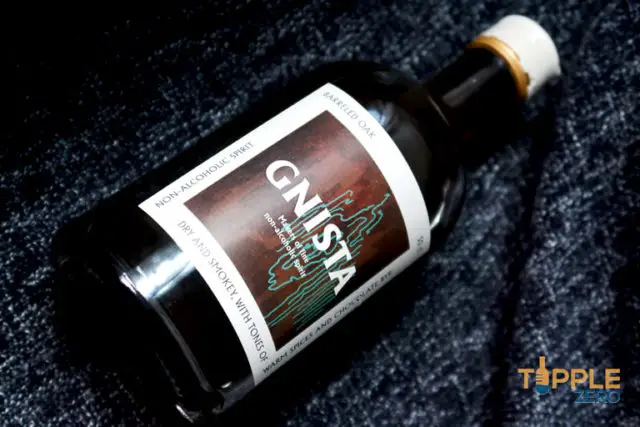
Gnista Spirits Episode Transcript
Crafting Fine Dark Non-Alcoholic Spirits with Gnista Spirits, Erika Ollen – Founder
Jonathan: [00:00:00] So on today’s episode, I’m chatting with Erica, from Gnista. Now, if you’ve been looking for a dark non-bulk spirit that has some really great complexity and mouthfeel and depth and heat to it, I think I’ve found one for you or potentially even two, if you like oaky and smokiness as well. So if you don’t know who needs to are, they are a Swedish and non-alcoholic brand that craft some amazing complex.
Spirits today. I’m going to chat with Erica, the founder, and she is located in Sweden. It was early morning there. And the serendipitous piece, just to keep an ear out for, as we get towards the end of the episode is when she’s talking about how she loves one of the cocktails with cold coffee, you can hear the coffee machine going on in the background.
So I thought that was great. And I actually kept in there because it matches it’s perfect. So let’s get onto the chat with Erica today and hopefully it’s a good one. Erica. Hello and welcome to the non-alcoholic drinks podcast. It’s great to finally catch up.
Erika: Thankyou, likewise. I I’m really glad you want to try them.
Jonathan: I know we’ve been trying to sort that out for a little while, but it was great to get them from the Brunswick ACEs guys who sorted me out with a bottle of H and yeah. I don’t know why it felt so surreal to kind of have a bottle from Sweden that feels like it never, ever landed. I’d never away land. I don’t know what I’m trying to say, but it feels like it’s so far away that when I had it, I’m like, oh, well, That’s true, but now it’s awesome to have them for a few weeks to try them out before chatting to you today.
So it’d be great to hear a little bit about your background and how you got into the space and got going with Gnista as a brand and a company.
Erika: Absolutely. Well, I I’ve always worked with food and branding and communications. I’ve never really, you know, bothered about a career or that kind of thing got into the new.
Facing 2015 with another drinks brand. So I’ve really you know experienced firsthand how this whole trend has got, you know, globally and in different markets. Are you in different stages? For example, the U S you know, they started off quite slow, but now they’re really picking up speed. So that brand that we worked on got some awards, it was really praised, but there also some, some challenges.
And around that time, we saw that there had been a non-alc spirit launching, obviously, you know, [00:02:00] And we, as a team ordered one of the first few bottoms and I was so surprised. I didn’t, I didn’t think that it tasted bad, but I didn’t think it resembled a spirit at all. And I looked at it and I knew that, you know, the guys behind this brand, you know, this was Seedlip, but they’re also going to new brands coming, doing the same brown story, the same positioning, really expensive, you know, for something that when you look in the basket, it’s like how much water is like almost just water.
It was a starting point for this whole new cat. Anyways. I tried, you know, I was, I was confused. I realized that it’s not the point that it should be split, like and challenging and complex and difficult, but the point is, you know, to make it socially acceptable for someone who is caring about health, not to drink.
So what matters is that you can go out, you can, you know, be with your friends. You can have something that doesn’t taste bad in the glass, but I thought you’d behave. Like what about. Yeah, can they really use this, you know, are there enough, enough margins for them to be able to use this? We based in Malmo, so it’s in the very south of Sweden and we just twenty-five minutes from Copenhagen.
So we went to Copenhagen and we went to the top bars and we did blind tests and we put a lot of questions, not just like, you know, will these products work. But rather if we set aside the intoxication effect, because you know, that would always be something that alcohol. If we put that aside, you know, what is it that makes a whiskey so nice.
What is it that makes it, you know, so good as a base for, for certain drinks. You know, what kind of characteristics are there in there? Well, you know, there are the smokiness, the tenants, um, and based on their questions or on their answers, [00:03:00] you know, I went in into the kitchen sickness that is more built as you’d build a meal, you know, what we need assets to do, where can we get this city?
Rhubarb is fantastic, et cetera. And then it ended up with sort of a combination of. I suppose cooking methods have dissidents, for example. So we added infiltration and smoking. So it’s a combination of different things, but in my head, what matters is the liquid? You know, I want to be able to offer something that does the job when you don’t want the alcohol sometimes or always, or, you know, just on the one drink for that night.
When you don’t want the alcohol and it’s a spirit drinking, a dark spirit drinking occasion. I want liquids that really will make the job.
Jonathan: Yeah. And they give you that feeling that you are drinking something that is actually similar to a fine spirit. It’s not just there because it has to be there it’s there because it belongs there and someone would actively choose to drink it.
And I think that was kind of the first thing I came across, because it was really funny to hear you say the ones that you tried didn’t quite land. I had one which will remain nameless and it was a dark spirit. I had it and it actually. Was so far from the mark that I was actually a little bit worried to try the barrel doke.
It was that kind of had that must have a pronounced effect on me. And it was, I kind of summed up the courage to get over it and get onto the barrelled Oak. And I couldn’t quite believe the level of oakiness and smokiness in there. And then looking at the floral wormwood, the hints of citrus in there. I know that the flavour profiles would be limitless because like you said, you’re building it like a food.
So I guess the flavour profiles and the ingredients are limitless. So how did you go about choosing that narrowing all that down to land on the flavours that you ended up with?
Erika: Yeah, I did some, some research because again, you know what matters, it wouldn’t be the actual, you know, flavour, imitations of [00:04:00] spirits that didn’t work.
I did look into like, okay, so sudden genes, what kind of herbal floor variations are there? And also did the same for, for whiskeys. I, you know, found various like maps, but then I think, you know, just 20 years of cooking to, to start with, I wanted to have a base that I could use for different, you know, for different kinds of liquids.
And so this base consisted of one would love EJ rhubarb, fresh ginger pepper. That is really, and instead it goes into the master group, but what happens is that quite soon you realize that there is room for some small variations, but not massive changes. So for example, if you use a spring rhubarb and compared that to August robot, yes.
You know, you will have a different acidity, et cetera. If you’re using a different one, would leave, have very different. So what happens? We’ve tried to standardize and I really, I traded these kind of first ones, but then I found a fantastic guy called Frederick, who is a master blender, and he’s, he’s almost too, you know, fine with flavours.
So he’s, you know, I’m like, oh, I want more, you know, habanero more, more, punchiness more, you know, more, more bitterness, more perfect balance of everything. But anyways, so he’s the one who’s. Creating and developing these recipes. So these days we don’t put in X amount of, um, uh, when would you use, we put in, we trade that on the side and we put in X amount of.
Jonathan: So it’s really adapted to the time of year or the flavour that’s coming out of the ingredients and making sure that what you’re [00:05:00] getting out of it matches what people are expecting from the drink and the actual profile of the wormwood or the barrel dock itself.
Erika: Yeah. But I mean, but like, you know, the early batches was like, we did one and that was perfect.
And then we created a second one and it wasn’t. A bit lane. So these were very early batches and then we created a third one and they were super ambitious. I think I lost Norway as a country because it was so bitchy and this important, he loved it. I mean, it’s a small country doesn’t matter, but he got him, some of the bonds really, you know, excited.
We got the. But then it was, there was way too bitter for the ordinary man. But since then, he has been two years since then we’ve adjusted.
Jonathan: So these days they’re much more stable than, and that is really interesting to hear the people I’ve spoken to create the spirits, especially say that the seasonality is something which is so hard to get across initially, because things are so different.
And like you said, the August versus a spring rhubarb can provide such a different impact. So it sounds like you’ve got a Frederick there as a team to work with you. Do you have anyone else on board? Is it just the two of you who are creating. Building this and getting it global.
Erika: So he’s on the production side, and then I work with madness, uh, who I’ve been working with for years. Now, I have straight in is like a designer and engineer, but he’s just super, you know, creative and get things done. And then there’s mark, uh, his bridge British, uh, who is like the. Uh, well, the marketing director, you say, but he’s, he just got on board quite recently.
He, so what we’d done, he just started now like with small tests for, um, um, you know, for, for paid media. So in essence, we’re, we’ve been around for almost two years and we haven’t spent anything [00:06:00] on marketing, like zero we’ve grown completely organically. We haven’t done. Any, any ads, you know, and I think what we, what we have is, you know, a good product and a different
Jonathan: positioning.
Yeah. Yeah. And that’s right. I think it’s build it and they will come, especially down here in Australia. So many products get a bit of a cult following or start to really get some traction based off just simple word of mouth or people talking to one another and then kind of saying it somewhere in an ad or something else.
And then all of a sudden it starts flying really quite quickly.
Erika: I mean, I know a lot of brands that really, you know, Excel during. And the lockdown and because, you know, they got out and they did the whole online, um, you know, selling direct directors, a people. If you don’t have a budget, it’s very hard.
Jonathan: Yeah, I imagine it would be. And I think that’s one of the things I hear a little bit when people say that coming into this space or starting up a new business is they want to do it on their own and they really want to bootstrap it and get it going. But it sounds like you’ve really managed to get through that period and get it growing and now build it with the team around you.
So in terms of the product and creating it from a process point of view, I know you said you guys do it in small batches and by hand. So how do you go about producing it and essentially.
Erika: So in essence, we have like this most brew where we add quite a few of these ingredients and some of them are, you know, preparing the side and some of them going directly, and then we’ll create on the side, like photo extracts in forward, we have Juniper oregano star anise and have an arrow so we can soak out these, but this is done, you know, beforehand and it’s put on Oak barrels and then we’ll also have the districts that I made in on the side.
So we have the master program participants and we have the, like the vodka, but, you know, it’s really good stuff. And I think, you know, people that [00:07:00] care about tastes, they will know. For example, if we just talk about pepper and pepper or cinnamon and cinnamon, you know, it’s like worlds apart, depending on what you choose to do add at the end, the percentage.
Which I don’t like, because this is, you know, to be consumed as a dark spirit on occasions. When you, when you drink a dark spirit, you should be able to store it as you’d still redox through it.
Jonathan: Yeah. And having those preservatives in the product really lets you get it to a broader audience, get it to the world.
Right. And you can kind of share it out and have the end product resemble what it left you with. Right. And give people the experience it’s meant to give them talking about the spirit specifically. The barrel dark. So when I was drinking that I found it had that oakiness and the smokiness, and then the sweet spice as well, and the flavours were kind of really dark and complex.
Yeah. And I think after my bad experience, it was a really interesting drink to get my hands on. And it was really quite pleased with the fact that it was really, really good. So could you chat maybe a little bit around the flavour profile in each glass and what people can really find and expect from it?
Erika: It’s the syrup we have, uh, again, both, you know, Okay, ginger and have an arrow because these kicking on, you know, different places. So what you have, you know, the smell I wanted to go to. So in essence, what you get is smokiness, uh, lots of, you know, right in group. But also some sweetness from the syrup, the raisins, uh, another self.
And that is again balanced by the bitterness from the one root and a few of these other, you know, things going inside.
Jonathan:. Yeah. And like you said earlier, I did find that both of them have that kind of similar baseline flavour profile, but then as they build, they are really quite distinct and separate. Given, they are so different overall.
How, if you had to choose an [00:08:00] occasion, how would you kind of place them? Where would you place them and what would the occasion be that you’d prefer to drink one or the other?
Erika: Well, it is definitely in the upper TIVA. I like to drink it room temp, potentially with some lemon. Um, some like, you know, with a piece of eyes, if you’re into more, into a long drink, you can mix them with soda or tonic or.
So you’re not going to TiVo like fresh summer. And then it goes like a, by the way, if you like the bird Oak, you should try it with a bit of Japanese. So London bartender is his favourite. Like when he does the cooking, is his favourite, like the smallest sip, just it’s savory different. I’ll give it a go.
Yeah. I like the Barlow after dinner. So when you want to create either a cocktail, which doesn’t have to be very difficult, you can just add some really, you know, some lemon, ginger beer. One of those classic ones like Manhattan or old fashion, or you drink it neat over in temp. How do you like it?
Jonathan: I liked them both neat.
And I’ve tried them, both. Nate I’ve had them both in a couple of cocktails. I was looking at the soy, the soy version of it, the slow cocktail, because I wrote that up as part of the review I’ve got, and I was really interested to give it a go, but haven’t done that yet. So after I chat to you, I will do that.
And it sounds like you’ve been working with quite a few different bars and bartenders as well. So how’s that gone? And has the feedback been. Bartenders to customers as well.
Erika: Well, I think bartenders in general are our biggest fan club. They really look for useful spirit substitutes that you can use that aren’t too costly, but within this, then you can make these, you know, classic drinks that people will continue to want, like in the group.
Or an old fashion, you know, it’s, it’s been in fashion for years and years and years. Um, it will continue to be so.
Jonathan: yeah and it sounds like they’ve taken it up at a rate of knots and it gives them the flexibility to offer a low alcohol cocktail or a no alcohol cocktail and just really open up their menu to other people and really keep building upon drinks that may have been around for a while and add a different touch to them.
Erika: Yeah. But if you, for example, take the from where would even take it in so many different directions. There’s one recipe from a fantastic workers from in Copenhagen, they mix it with the same part, grapefruit and cream, and then, you know, shaken with a one once you have that direction. But you also have others going more into like the more vinegary sides, more acidity, more fruitiness.
So you can take it into different directions without adding too many.
Jonathan: Nice. That’s awesome. And I think, you know, one of the big things that people talk about when they get to this point where they’ve got a product and it’s amazing, and everyone’s kind of starting to get it ranged and moving through the world and through the major retailers is it took a lot of iterations to get here.
So did you have many challenges or many iterations along the way to get it to a point where you’ve now got it been picked up?
Erika: The challenges were very few when, you know, developing the liquids and creating the brand and the, we, you know, where we wanted to sit in, in the category and in the market, because, you know, again, it’s, it’s just the liquid essential quality liquid occasion syndrome, you know, it’s about anything that was easy, but then, you know, we launched right before.
And again, you know, when you have plan of growing bars and restaurants, well, you know, it’s tricky. So we spent last year as we had a kickstart campaign to get funding, to finalize inbound Oak, which we did. We have this, we have this campaign early 2020. So [00:10:00] it was called. So big, so Bokashi animal. And so what we did was that we, we placed this ad, uh, it was a bit of a, like a gimmicky thing.
And we said, you know, Hey, come to Sweden, bring a friend. We’d put in the, one of the coolest hotel stuff, come and get you. You have to party all weekend. You’re friends. You do like normal, you yourself to be party animal who hardly ever sober. You need to do with Calista. And then give us a report at the end.
It got such a spin. I mean, it got Varella wasn’t, you know, a TV shows in Columbia and Australia and radio shows and it was just, it was fantastic. We had 25,000 applications. And that really, and these were people, you know, they creating videos and typing down why, and, and that, you know, what started off as a fun thing.
It, it, it really made me quite humble because yes, you know, you can have a lot of, um, um, you know, added benefits, health benefits, and your special routes. Um, but really imagine if you can create something that, and just, you know, plant the seed of these people that, you know, what if I could do it sober for one week.
Just planting that seed, like, imagine the impact you could have when you talk, because you know, the health people, they’re going to find us. But, but really what it also made was that it gave us lots of PR lots of contacts, lots of people getting in touch. And so 2020 was really spent developing partnerships because you want it to be right.
This is a special product. It needs to be taken care of by people who really know what they’re doing, who dedicated, um, which I’m sure, you know, working within the No-lo space is not hard because. They are really dedicated. They are into the space [00:11:00] for a reason, but finding these partners and know establishing the partnerships going forward.
So when, when did you went to one? It’s been a lot about just launching, you know, everywhere and scaling, for example, in the U S it goes super well. So that’s not. In Australia, we’re just about to get Brunswick, ACEs to do the job for us. And they are again, super, you know, they, they know exactly what they do.
They know where they want to go.
Jonathan: Yeah, no, it is really great to have that bar down there. And I’ve been down there once, actually just between lockdowns. I managed to get there and it was awesome to see the range of drinks and the list they’ve got there and how it’s always evolving and growing. So for you guys, it really sounds like it’s that period where it’s looking to kind of develop and grow and put all the puzzle pieces together and not only get it ranged in into store, but also then into people’s hands and into their hearts and minds as well, where they’ve become educated and then know what it’s all about.
They know what the flavour profile does and also what it’s for and how they can enjoy it and drink it.
Erika: Yeah. And again, you know, if they tried, they might have been tried three and they completed it. If they tried one and had a bad experience or just didn’t spoons that didn’t meet their expectations when they might not want to try another one.
So it sits a bit about education. So it’s about following. I would say, you know, the cycles of non lows. If you tighten, if you take Sweden, this is one country that all our booze is sold here, you know, via the monopoly does it’s chains of. And the positioning is the docs grip very important for me, you know, I don’t, I don’t want to be sold in next to the juices in the supermarket since Wheaton.
So I wanted to be, you know, when you go and buy your wine, that’s where you get mixed up. And I started talking to them, you know, two years ago and they’ve really, you know, has it Hampton? No, no, no. You know, we don’t believe in this. It’s just, you know, made up thing. The [00:12:00] non-expert thing. We kept the discussion going and, you know, in a year ahead they got back in this.
You know what I think this is mostly something that you need to drink when you’re out. You not in a bar, you need the bartender to create a drink and tell the story. It’s not something you buy at home. And I honestly, I gave them some statistics. They paid, look, this is from the steel ventures. People drink this at home.
And now this, um, just like a month ago, they came back and they say, we think is just really good and very exciting what you launched in 20.
And I’m sure they rush. And if we launched this in the monopoly two years ago, it would have been journey. People wouldn’t have bought it or they would have bought it. And then, you know, they wouldn’t know what to do. So it’s really following and knowing where, you know, where the transits and.
Jonathan: That’s so great to say that we’re for so long.
Like, no, it doesn’t fit. It doesn’t work. I don’t want it. And now all of a sudden the penny has dropped, then it’s time to be like, I need it. And I needed it yesterday. Why haven’t I got it? Um, it’s quite interesting to see that and to be able to stand here is not too dissimilar. It’s quite the same. The supermarkets and everyone else is getting on board.
And it’s really great to see it growing in the whole industry and category growing. So more people, more eyeballs are on it. And essentially that just means more awareness and more growth, which is really awesome to say. And I’m glad it’s really starting to happen over there as well. Jumping in at really quickly to let you know that everything I’ve spoken about with Erica today, the drinks and the reviews are all going to be over@tippleszero.com forward slash.
0 1 0 nearly if you’ve got it there. Um, but you can find everything there and get all the information about today’s episode, where to find this [00:13:00] data and how you can get your hands on a bottle as well. And to wrap up, I chatted to Erica about her favourite drinks and the way that she likes to enjoy the product after working on it for the day is all done and dusted.
So let’s wrap up with that and get to the end of today’s episode.
I know we spoke about it a little bit other, and we’ve touched on it quite a bit around the different cocktails, but could we recap and go back over your favourite cocktails and how you like enjoying them? Because there’s always something quite nice to hear about the way that the founders or the creators enjoy the drinks, because it just means that it’s just a little bit around it, of an insight as to how the drink got started and how everything got created.
And it just helps kind of. Give me something to look out for when you’re drinking it. So have you got a couple of favourites or what would be your go-to when you’re drinking it at home at the end of the day and Mr. Work is done and it’s time to enjoy. And this there instead.
Erika: Again, neat, uh, with a bit of lemon, sort of in a 19-20 degrees.
So like just bloom term, when I create these, these cocktails, I use it, the one with the cream that I told you about with the, with the grapefruit and the cream, but I make it with oat cream, which is even better. So not as like fatty says, one partner is the one part grapefruit juice and one part either, you know, cream or cream, and then just checking it with.
So it’s really, you know, an interesting, easy to me, cocktail you without outcome and the bono. Neat. If you want something that is not as sweet, I mix it with, with soda. Uh, what you get then is mostly a way of tasting drink. I would say, like, you know, you can really taste the different nuances, but I wasn’t like it with, with lemon needs.
If I were to make a cocktail, I [00:14:00] like it with coffee, coffee, like cold, cold.
Jonathan: Brilliant. Well, Erica, thanks again for chatting today. It’s been really awesome to hear the way that Mr. Go around making the products and how you’ve created something, which I don’t think I’ve seen very many people do from a food perspective.
Um, so it’s great to hear that. And I really look forward to hearing the way that people enjoy it too. So I’ll have everything in today’s episode, over in the show notes over at tipplezero.com/session011. So you can find everything there and I’ll have all the drinks, all the reviews ready for you to go, and also where you can buy them
Erika: thanks for having me on Jonathan and for being such fun.
Jonathan: All right. So I hope you enjoy hearing all about Gnista in today’s episode with Erica. Like I mentioned just a minute ago, you can find everything from today’s episode over at triplezero.com/session010. And I’ll have all the reviews up there for the barrelled Oak and the flower wormwood and the links to where you can find them as well.
Now, if you’re looking for some other information around what I’m up to and what else is going on at triple zero, head over to add tipples zero drinks on Instagram and check it out there. Or if you want to get in touch and let me know what you’re drinking. Drop me an email at podcast@tipplezero.com until next time I hope you guys enjoy some amazing non alcoholic drinks and I’ll talk to you soon.
Bye.
OTHER EPISODESEpisode #[XXX]
[BRAND], [ROLE] [NAME].
[PODCAST PAGE INFO]. Listen in!
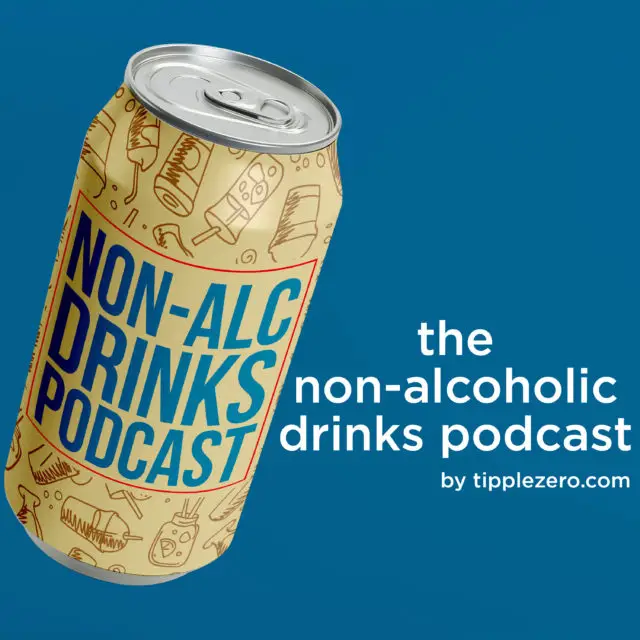

? Not So Low-Key Non-Alcoholic Drinks Nerd!
Bringing you your #1 non alcoholic drinks podcast.
Passionate about getting the word out there, sharing new discoveries and stories from the people I meet along the way are my ‘why’. Whether it is an inspiring non-alcoholic journey, spicy zero alcohol Gin or a creamy milk 0.5% ABV Milk Stout we’ll bring it all to you.
